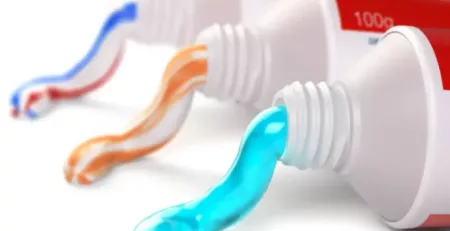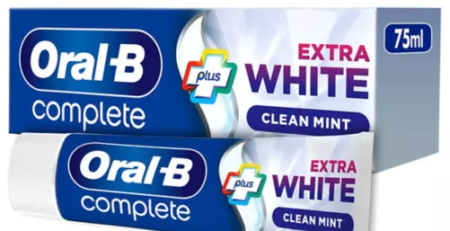The Evolution of Toothpaste: From Ancient Times to Modern Formulations
Introduction to Evolution of Toothpaste
In this article we will look at ‘Ancient & Modern Toothpaste’. Toothpaste is a product that we use every day to clean our teeth and maintain our oral health.
But have you ever wondered how toothpaste came to be and how it has changed over time?
In this article, we will trace the history and evolution of toothpaste from ancient times to modern formulations and see how it has adapted to the needs and preferences of different cultures and generations.
Evolution of Toothpaste in the Ancient times
The earliest evidence of toothpaste dates back to around 5000 BC, when ancient Egyptians used a mixture of crushed ox hooves, ashes, burnt eggshells, and pumice to clean their teeth.
They also added aromatic substances such as mint, cinnamon, or myrrh to freshen their breath. Ancient Greeks and Romans also used similar concoctions, but added more abrasive ingredients such as crushed bones, oyster shells, or charcoal.
They also added flavourings such as salt, honey, or vinegar. Ancient Indians used a twig from the neem tree, which has antibacterial and anti-inflammatory properties, to brush their teeth.
Ancient Chinese used a paste made of salt, ginseng, herbal mints, and powdered rice or bamboo.
Middle Ages
During the Middle Ages, toothpaste was not widely used or available, as most people did not pay much attention to their oral hygiene or health.
However, some people still used various substances to clean their teeth, such as burnt bread, charcoal, salt, or herbs. Some also used a cloth or a rag to rub their teeth.
In the 9th century, a Persian musician and fashion designer named Ziryab invented a type of toothpaste that was popular in Islamic Spain. It was made of salt, pepper, mint, and iris.
Renaissance
During the Renaissance period, toothpaste became more sophisticated and diverse, as people started to experiment with different ingredients and recipes. Some of the ingredients used were chalk, brick dust, coral powder, alum, honey, sage, rosewater, lemon juice, and tobacco.
However, some of these ingredients were too harsh or corrosive for the teeth and gums and caused more harm than good. In 1498, the Chinese invented the first bristle toothbrush made of hog hair and bamboo or bone, which made brushing more effective and convenient.
18th and 19th centuries
In the 18th and 19th centuries, toothpaste became more commercialised and standardised, as manufacturers started to produce and sell toothpaste in jars or tubes.
Some of the ingredients used were soap, chalk, borax, glycerin, lanolin, and bicarbonate of soda. In 1824, a dentist named Peabody added soap to toothpaste for better cleaning.
In 1850, a dentist named John Harris added chalk to toothpaste for better polishing. In 1873, Colgate started mass-producing toothpaste in jars.
In 1892, Dr. Washington Sheffield invented the first collapsible toothpaste tube.
20th and 21st centuries
In the 20th and 21st centuries, toothpaste became more advanced and specialised, as scientists discovered new ingredients and technologies that improved the quality and performance of toothpaste. Some of the milestones were:
- In 1914, fluoride was added to toothpaste for the first time by an American dentist named William McKee. Fluoride is a mineral that strengthens enamel and protects teeth from decay.
- In 1945, synthetic detergents such as sodium lauryl sulfate were added to toothpaste to replace soap and create foam. Detergents help remove dirt and debris from the teeth.
- In 1950s, abrasives such as silica or calcium carbonate were added to toothpaste to replace chalk and improve cleaning and polishing. Abrasives help scrub away surface stains and plaque from the teeth.
- In 1960s, whitening agents such as hydrogen peroxide or carbamide peroxide were added to toothpaste to whiten teeth by breaking down the molecules that cause stains on the enamel.
- In 1970s, sensitivity relief agents such as potassium nitrate or strontium chloride were added to toothpaste to reduce the pain or discomfort caused by sensitive teeth. Sensitivity relief agents work by blocking the nerve signals that trigger pain when the teeth are exposed to hot, cold, sweet, or sour stimuli.
- In 1980s, tartar control agents such as zinc citrate or pyrophosphate were added to toothpaste to prevent or reduce the formation of tartar on the teeth. Tartar control agents work by delaying the calcification of plaque on the teeth, allowing more time to remove the plaque through normal brushing.
- In 1990s, natural or herbal toothpastes became more popular, as people started to look for more natural and eco-friendly alternatives to regular toothpastes. Natural or herbal toothpastes contain ingredients derived from plants, minerals, or animals, such as coconut oil, baking soda, xylitol, aloe vera, or propolis.
Conclusion
Toothpaste is a product that we use every day to clean our teeth and maintain our oral health. It has evolved from ancient times to modern formulations, adapting to the needs and preferences of different cultures and generations.
Toothpaste can provide various benefits for oral health and beauty, such as preventing cavities, whitening teeth, reducing sensitivity, or freshening breath.
However, not all toothpastes are equally effective or suitable for everyone. The best way to choose a toothpaste for your oral health and beauty is to consult your dentist and follow their recommendations.
They can advise you on the most suitable product or treatment for your teeth and gums and monitor the results and side effects. They can also help you maintain good oral hygiene and prevent further staining or damage to your teeth.




Leave a Reply